Geology
Geological structure
The richness of the geological structure of the Giant Mountains is proven both by the diversity of the rocks that can be found here, as well as by the perplexity of the relations between them. Natural rock expansions in this area make one able to familiarize oneself with many variants of metamorphic and magmatic rocks, along with geological phenomena that – in a manner of speaking – have “documented” various spectacular events that had occurred here in the depths or on the surface of the Earth during the last 500 million years.
The Carbian granite intrusion, dating back to the period of more than 300 million years ago, together with the metamorphic shield rocks, which belong to a large geological unit known as the Giant Mountains Block, remain the core of the geological structure of the Giant Mountains. Among the metamorphic rocks appear, a distinction can be made to (amoung others) such as: glazes, gneisses, amphibolites, crystalline limestone and hornfels.
The latter are related to the thermal effect of granite magma on the cover rocks and are characterized by high resilience to a destruction made by natural forces. Presence of aforementioned rocks is the very factor that Śnieżka “owes” its height to. Magmatic rocks, apart from so called – deep granite – are also represented by tertiary basaltoids. Among the most typical areas of those to occur, one can distinguish Mały Śnieżny Kocioł, where these rocks remain exposed in the zone of Bazaltar Gap. Thanks to the presence such alkaline rocks, this place, due to its biodiversity, is the most valuable botanical site in the entire massif. Within the Giant Mountains you can also find sedimentary rocks - very old Carboniferous conglomerations, appearing in the valley of Srebrnik in the Lasocki Ridge, but also almost modern, Holocene peat – can be found in the Równia pod Śnieżką.
It is an interesting fact, that the metamorphic rocks of the Giant Mountains have “recorded” the most curious geological events in the history of the Earth, for example: the collision of continents, the closure of the ocean, the imposition of massive rock masses in the form of mantle and the rise of mountains of today's Himalayas type. Over the next millions of years it has been razed to the surface of the ground – due to erosion, and thus today's Giant Mountains as a mountain formation, have nothing to do with the original massif.
The Giant Mountains granites are found in two main varieties - the coarse-grained – being the main ridge’s body structure, and the porphiric – widespread on the northern slopes of the Giant Mountains, as well as in the Kotlina Jeleniogórska and the Rudawy Janowickie mountains. This second variant was often used as an ornamental cladding stone, due to the presence of large pink crystals of potassium feldspar, raising the decorative qualities of the rock. Porphyritic granite has been exploited (among other places) in the quarry of Michałowice and was used for instance during the decoration of the Palace of Culture and Science in Warsaw. The geological structure of a granite rock can be very well perceived as a process of “documenting” flowing an unconsolidated granite magma. These include biotite loops, linearly elongated feldspar crystals and crimped aplite veins, observable within the granite dome of Chojnik Mountain.
The Karkonosze massif is also one of the most interesting mineralogical areas in Europe. Within the Giant Mountains granite and its cover rocks there are many minerals that have been an object of human interest for centuries. In the Karkonosze (Polish and Czech) area more than 150 mineralization types were recorded. Scientists have identified in general – 230 minerals. What may be found interesting - five minerals have been described here – for the very first time in the history of world’s geological studies. The excellent exposure of the terrain and a relatively easy accessibility of observing particular mineralogical appearances, make it possible to get to know them in a wider geological context. The most important occurrences of the minerals are related to the crystallization of magma, which gave rise to the Karkonosze granite, especially those with the late infiltration stage and with the earlier processes shaping the multiform of the rock covers. These represent (among others): ore mineralization and pegmatites. As far as an ore mineralization is concerned, the most famous site remains the bedrock of the town of Kowary, where the origins of the excavation date back to the period as ancient as the twelfth century A.D. It is a fact nonetheless, that – on a larger scale, only iron ore was originally mined here. Still, after the Second World War uranium mining started to be established as well. This bed of the latter is located in touch with the intrusion of Giant Mountains granite with Knevno gneisses. The ore-forming formation contains magnetite-polymeric mineralization with an extremely rich resources of ore minerals, mainly iron, nickel, cobalt, silver, bismuth, copper, lead, zinc, uranium and arsenic.
The pegmatites associated with the final magma’s crystallization process have the composition of a granite, but yet remain composed of much larger crystals reaching up to several tens of cm in length. In past times such rocks were used for the glass and ceramics industry purpose, the mining excavation sites were scattered throughout the Giant Mountains in the form of small mining pits of Szklarska Poręba (Czerwona Jama), Karpacz (Raven Rock) and Zachełmie (Red Cave). Pegmatites of the Giant Mountains are known as the areas of the richest mineralization of this type in Poland - almost 90 minerals have been identified here. For several centuries they have been providing with the sources of very attractive mineralogical specimens, that can be now found in the European and world museums as long as in the private collections. Some of the specimens of pegmatite quartz reach a length of 1 m. The most valuable pegmatites of the Karkonosze are those of the Rocks of Karpacz, due to the fact of containing minerals as rare and widely desired as sapphires (blue corundum).
Granite quartz veins hold an interesting a form of a curious mineral – so called – amethyst, a purple variation of quartz, being one of the most characteristic minerals of the Giant Mountains. It can be found find in the lower part of the mountains in the area of Szklarska Poręba, Michałowice and Karpacz.
Not to underestimate remains the role of the resource base, that made the very development of local mining and related industry possible. This long lasting (throughout the centuries) activity, we can observe several traces of - both on the surface and underground; excavations and search areas such as in the Jedlica Valley or the Owl’s Valley. It is worth mentioning that scientific value of Karkonosze – as far as the development and popularization of this field of science is concerned – is indeed quite unique and comparable only to the area of the Saxon Ore Mountains.
The Carbian granite intrusion, dating back to the period of more than 300 million years ago, together with the metamorphic shield rocks, which belong to a large geological unit known as the Giant Mountains Block, remain the core of the geological structure of the Giant Mountains. Among the metamorphic rocks appear, a distinction can be made to (amoung others) such as: glazes, gneisses, amphibolites, crystalline limestone and hornfels.
The latter are related to the thermal effect of granite magma on the cover rocks and are characterized by high resilience to a destruction made by natural forces. Presence of aforementioned rocks is the very factor that Śnieżka “owes” its height to. Magmatic rocks, apart from so called – deep granite – are also represented by tertiary basaltoids. Among the most typical areas of those to occur, one can distinguish Mały Śnieżny Kocioł, where these rocks remain exposed in the zone of Bazaltar Gap. Thanks to the presence such alkaline rocks, this place, due to its biodiversity, is the most valuable botanical site in the entire massif. Within the Giant Mountains you can also find sedimentary rocks - very old Carboniferous conglomerations, appearing in the valley of Srebrnik in the Lasocki Ridge, but also almost modern, Holocene peat – can be found in the Równia pod Śnieżką.
It is an interesting fact, that the metamorphic rocks of the Giant Mountains have “recorded” the most curious geological events in the history of the Earth, for example: the collision of continents, the closure of the ocean, the imposition of massive rock masses in the form of mantle and the rise of mountains of today's Himalayas type. Over the next millions of years it has been razed to the surface of the ground – due to erosion, and thus today's Giant Mountains as a mountain formation, have nothing to do with the original massif.
The Giant Mountains granites are found in two main varieties - the coarse-grained – being the main ridge’s body structure, and the porphiric – widespread on the northern slopes of the Giant Mountains, as well as in the Kotlina Jeleniogórska and the Rudawy Janowickie mountains. This second variant was often used as an ornamental cladding stone, due to the presence of large pink crystals of potassium feldspar, raising the decorative qualities of the rock. Porphyritic granite has been exploited (among other places) in the quarry of Michałowice and was used for instance during the decoration of the Palace of Culture and Science in Warsaw. The geological structure of a granite rock can be very well perceived as a process of “documenting” flowing an unconsolidated granite magma. These include biotite loops, linearly elongated feldspar crystals and crimped aplite veins, observable within the granite dome of Chojnik Mountain.
The Karkonosze massif is also one of the most interesting mineralogical areas in Europe. Within the Giant Mountains granite and its cover rocks there are many minerals that have been an object of human interest for centuries. In the Karkonosze (Polish and Czech) area more than 150 mineralization types were recorded. Scientists have identified in general – 230 minerals. What may be found interesting - five minerals have been described here – for the very first time in the history of world’s geological studies. The excellent exposure of the terrain and a relatively easy accessibility of observing particular mineralogical appearances, make it possible to get to know them in a wider geological context. The most important occurrences of the minerals are related to the crystallization of magma, which gave rise to the Karkonosze granite, especially those with the late infiltration stage and with the earlier processes shaping the multiform of the rock covers. These represent (among others): ore mineralization and pegmatites. As far as an ore mineralization is concerned, the most famous site remains the bedrock of the town of Kowary, where the origins of the excavation date back to the period as ancient as the twelfth century A.D. It is a fact nonetheless, that – on a larger scale, only iron ore was originally mined here. Still, after the Second World War uranium mining started to be established as well. This bed of the latter is located in touch with the intrusion of Giant Mountains granite with Knevno gneisses. The ore-forming formation contains magnetite-polymeric mineralization with an extremely rich resources of ore minerals, mainly iron, nickel, cobalt, silver, bismuth, copper, lead, zinc, uranium and arsenic.
The pegmatites associated with the final magma’s crystallization process have the composition of a granite, but yet remain composed of much larger crystals reaching up to several tens of cm in length. In past times such rocks were used for the glass and ceramics industry purpose, the mining excavation sites were scattered throughout the Giant Mountains in the form of small mining pits of Szklarska Poręba (Czerwona Jama), Karpacz (Raven Rock) and Zachełmie (Red Cave). Pegmatites of the Giant Mountains are known as the areas of the richest mineralization of this type in Poland - almost 90 minerals have been identified here. For several centuries they have been providing with the sources of very attractive mineralogical specimens, that can be now found in the European and world museums as long as in the private collections. Some of the specimens of pegmatite quartz reach a length of 1 m. The most valuable pegmatites of the Karkonosze are those of the Rocks of Karpacz, due to the fact of containing minerals as rare and widely desired as sapphires (blue corundum).
Granite quartz veins hold an interesting a form of a curious mineral – so called – amethyst, a purple variation of quartz, being one of the most characteristic minerals of the Giant Mountains. It can be found find in the lower part of the mountains in the area of Szklarska Poręba, Michałowice and Karpacz.
Not to underestimate remains the role of the resource base, that made the very development of local mining and related industry possible. This long lasting (throughout the centuries) activity, we can observe several traces of - both on the surface and underground; excavations and search areas such as in the Jedlica Valley or the Owl’s Valley. It is worth mentioning that scientific value of Karkonosze – as far as the development and popularization of this field of science is concerned – is indeed quite unique and comparable only to the area of the Saxon Ore Mountains.


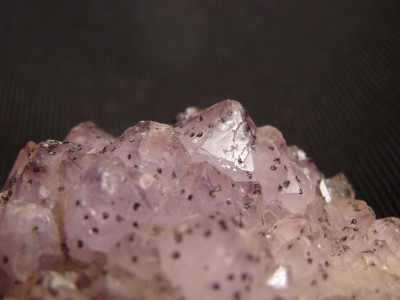
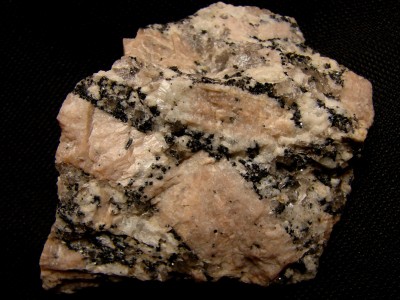
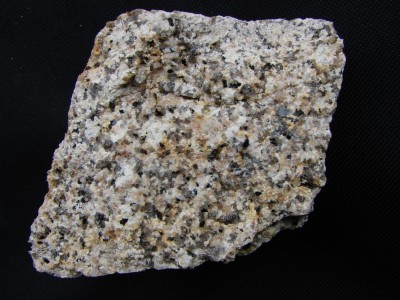
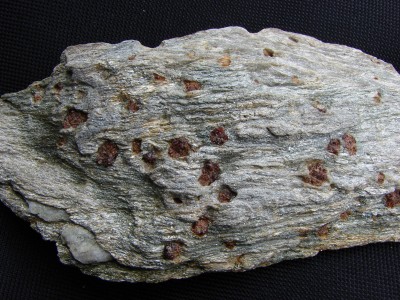
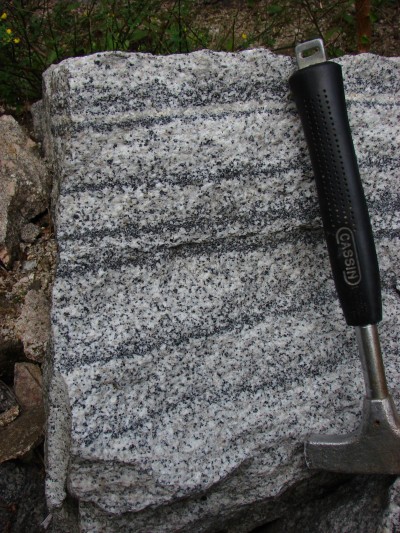
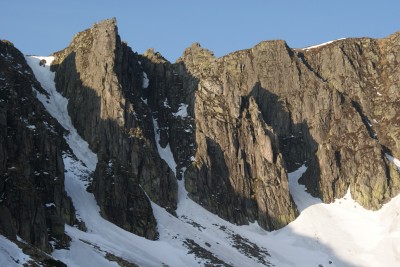
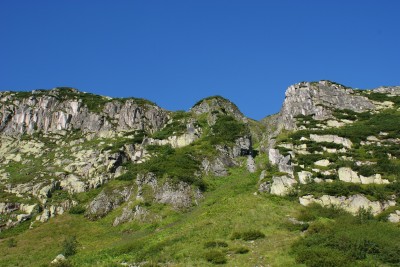
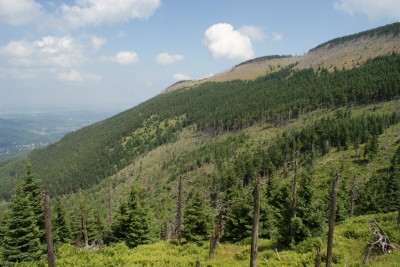
 Public Information Bulletin
Public Information Bulletin





